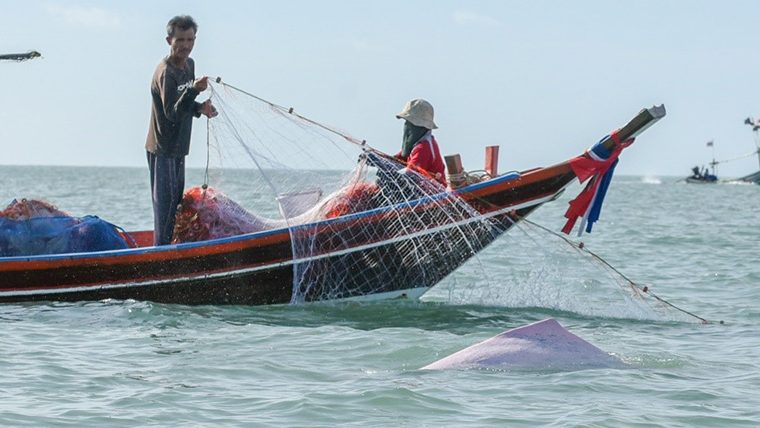
The Newcastle University study provides the first-ever estimate of the annual catch of marine megafauna species, including rays, sharks, sea turtles, dolphins, and dugongs, in Thailand’s small-scale fisheries – those fisheries using small boats, low-tech equipment and often haul their fishing gear by hand.
Published in the journal Aquatic Conservation: Marine and Freshwater Research, the results show estimated annual catches of 5.6 million rays, 457 thousand sharks, 2.4 thousand sea turtles, 790 small cetaceans, and 72 dugongs in Thailand’s small-scale fisheries.
“We collected data using questionnaire interviews with 535 fishers in 17 provinces along the Gulf of Thailand and the Andaman Sea coasts in 2016 and 2017. Our results show that gillnets, especially crab gillnets and shrimp trammel nets, were responsible for most of the catch, posing a significant threat to marine megafauna in Thailand” said Dr Thevarit Svarachorn, who conducted the study during his PhD research at Newcastle University.
Many of the species caught in these fisheries, like butterfly rays, wedgefish, and reef sharks, are already threatened with extinction. “These are shallow water species. They are very exposed to small-scale fisheries pressure, which are likely key drivers of their extinction risk around the world.” said co-author Dr Andrew Temple, Global Postdoctoral Fellow at King Abdullah University of Science and Technology.
Senior author, Professor Per Berggren, Professor of Marine Megafauna Conservation at Newcastle University School of Natural and Environmental Sciences, said: “The study highlights the urgent need for regulating gillnet fishing, especially crab gillnets, to protect threatened megafauna from disappearing. These species are crucial for maintaining the health and productivity of the marine ecosystem.
“Alternative fishing gears such as traps and pots should be considered to target the desired species without harming marine megafauna. Collaboration between fishers, manufacturers, and fisheries managers, along with training on best practices for releasing caught megafauna, could further reduce by-catch mortality.”
The authors also recommend using LED lights on gillnets, acoustic deterrent devices, bycatch reduction devices, and turtle excluder devices to help prevent megafauna bycatch.
Reference
Svarachorn, T., Temple, A.J. & Berggren, P. (2023). Marine megafauna catch in Thai small-scale fisheries. Aquatic Conservation: Marine and Freshwater Ecosystems, 1–18. https://onlinelibrary.wiley.com/doi/full/10.1002/aqc.3989







